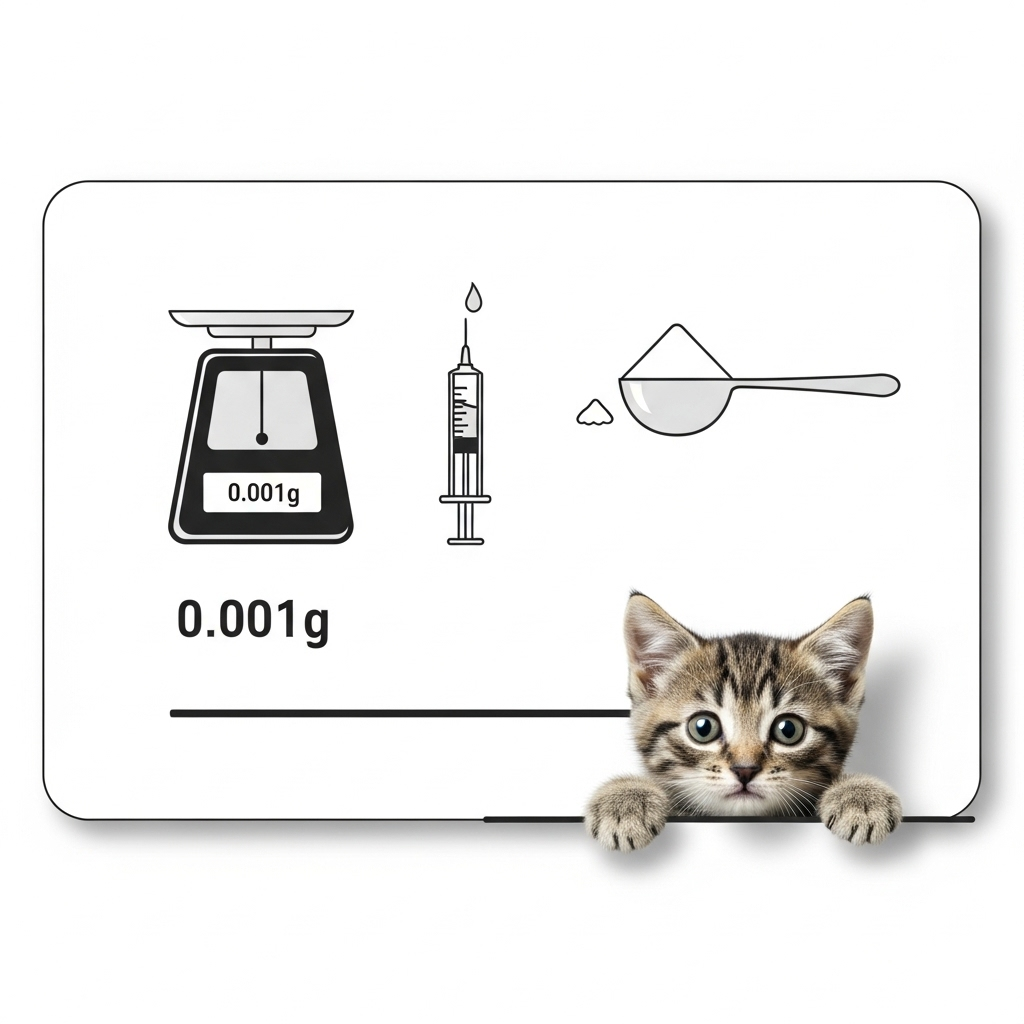Kitten Probiotic Dosage by Weight (8–12 Weeks)

Introducing probiotics to an 8–12 week old kitten can support healthy gastrointestinal development, especially during weaning, after mild digestive upset, or when transitioning foods. This guide gives clear, conservative dosage ranges by weight, explains how to give probiotics safely, and highlights when to contact your veterinarian. Always follow product labeling and your vet’s advice—this page provides general information, not a definitive medical prescription.
Why probiotics for young kittens?
Kittens are developing their gut microbiome during the first weeks of life. Probiotics (live beneficial bacteria) can help:
- support digestion and stool consistency
- reduce the risk of mild diarrhea in some situations
- aid recovery after short courses of antibiotics (when prescribed)
Not every kitten needs a probiotic. Use them when recommended by a veterinarian or when a product is intended for healthy prevention in young animals.
General dosing guidance (8–12 weeks)
Probiotic potency is typically given in colony forming units (CFU). Veterinary probiotic dosing varies by product and strain; many kittens do well on conservative CFU ranges. A practical, cautious guideline is approximately 1×108 to 5×108 CFU per kilogram (kg) of bodyweight per day, adjusted to product strengths and vet recommendations.
How to read the chart
The table below translates the per‑kg guideline into common kitten weights (both kg and lb) and gives a suggested CFU-per-day range. Use this as a starting point. Round to the nearest whole measurement appropriate for the product (e.g., a whole scoop, packet, or paste portion) and follow label instructions.
| Approx. Weight (lb) | Approx. Weight (kg) | Suggested CFU per day (conservative range) | Typical Frequency |
|---|---|---|---|
| 1–2 lb | 0.45–0.9 kg | 50 million – 450 million CFU | Once daily |
| 2–4 lb | 0.9–1.8 kg | 200 million – 900 million CFU | Once daily |
| 4–6 lb | 1.8–2.7 kg | 400 million – 1.35 billion CFU | Once daily (or split twice daily if directed) |
| 6+ lb | >2.7 kg | 1.0 billion – 2.0 billion CFU | Once daily (or as advised) |
Practical tips for administration
- Follow the product label. Manufacturers often give kitten-specific instructions (scoops, packets, paste amounts).
- Mix powder or packets into a small amount of wet food or water to ensure full ingestion. Probiotic pastes can be offered directly from the tube if labeled for kittens.
- Start with the lower end of the range for the first 2–3 days, then increase if your vet recommends it.
- Give probiotics at a consistent time each day; many owners give probiotics after a meal to reduce stomach acidity exposure and improve survival of organisms through the stomach.
- Store per label—many probiotics require refrigeration after opening to maintain potency.
Strains and product types
Common strains used in feline probiotics include Enterococcus faecium, Lactobacillus spp., and Bifidobacterium spp. Different products have different strains and CFU counts. Choose a product formulated for kittens or small animals when possible.
When to use probiotics and when to see a vet
Consider probiotics for short-term support during:
- mild, transient diarrhea after dietary change
- stressful events (boarding, travel, new home)
- after veterinarian-prescribed antibiotics (ask your vet about timing)
Seek veterinary care immediately if your kitten has any of the following:
- persistent or bloody diarrhea
- vomiting, lethargy, refusal to eat
- weight loss or signs of dehydration
Probiotics are not a substitute for veterinary diagnosis and treatment.
Pros and Cons
| Pros | Cons |
|---|---|
| May support healthy stool consistency and digestion Easy to give (powders/pastes) |
Variable efficacy between products and strains Possible mild side effects (soft stool, gas) |
FAQ
-
Q: How long should I give probiotics to my 8–12 week old kitten?
A: For mild issues, a 5–14 day course is common. For ongoing support you might use a maintenance dose; discuss duration with your veterinarian based on the kitten’s health and the product used.
-
Q: Can my kitten take human probiotics?
A: Some human probiotics are similar to pet products, but strains, dosages, and excipients can differ. Use products labeled for pets or confirm safety with your vet before using human formulations.
-
Q: Are there side effects?
A: Mild digestive changes (soft stools, gas) can occur initially. Stop and contact your vet if you see severe diarrhea, vomiting, or signs of illness.
-
Q: My kitten is very small—should I reduce the dose?
A: Yes. Use the lower end of the dosing range and follow product instructions. If in doubt, ask your veterinarian for a weight-adjusted recommendation.
Key Takeaways
- Use conservative CFU ranges for 8–12 week kittens—approximately 1×108 to 5×108 CFU per kg per day as a general guideline.
- Follow the probiotic product label and confirm dosing with your veterinarian, especially for very small or sick kittens.
- Start low, give with food, and monitor stool and overall health; stop and call your vet if severe symptoms occur.
- Choose formulations intended for kittens or small animals when possible; storage and viability matter.
Note: This information is intended to provide general guidance about probiotic dosing ranges. It is not a substitute for professional veterinary care.
Disclaimer: The recommendations on this page are general and educational. Individual products vary in strain, concentration, and instructions. Always consult your veterinarian before starting any supplement—especially for very young, sick, or immunocompromised kittens. If your kitten shows signs of distress, seek veterinary care promptly.

Leave a Reply